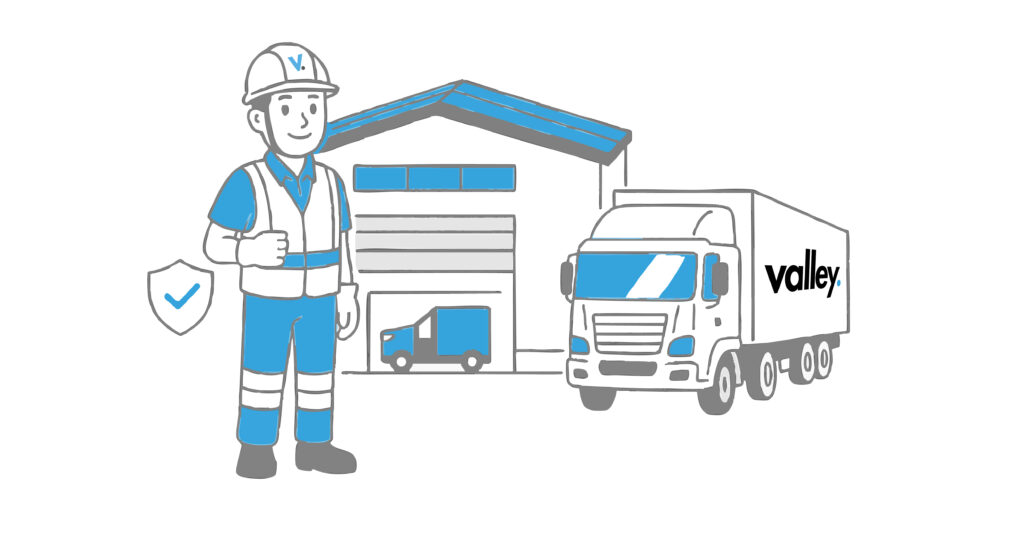Safety Pays: Reducing Incidents Without Slowing Operations

In trucking, time is money, but safety is what keeps that money flowing. Every crash, injury, or damaged load costs far more than repairs. It raises insurance premiums, disrupts schedules, and damages a company’s reputation. Many fleets want to improve safety but worry that stricter processes will slow them down. The truth is, modern safety programs can make fleets both safer and more efficient when done right.
Quick Answer
Safety and efficiency go hand in hand. Fleets that combine clear communication, reliable technology, and engaged drivers can reduce incidents, cut costs, and maintain performance. A proactive safety culture protects both drivers and profits without slowing down daily operations.
Why This Issue Matters
Trucking is one of the highest-risk industries in transportation. The Federal Motor Carrier Safety Administration reports thousands of large truck crashes every year, leading to costly repairs, injuries, and insurance claims. Every incident causes delays and higher expenses that ripple across entire supply chains.
However, real-world data shows that safer fleets are more profitable. Usher Transport reduced preventable accidents by 32 percent after implementing AI-powered dashcams and driver coaching. The fleet not only improved safety but also reduced insurance costs and downtime.
Similarly, Drivewyze found that fleets using real-time safety alerts achieved a 29 percent reduction in crashes. This improvement came from helping drivers anticipate risks, not from adding restrictions.
And according to WorkTruckOnline, companies that combine telematics, fatigue monitoring, and preventive maintenance see major improvements in both safety and operational efficiency. The data is clear, fleets that invest in safety gain an advantage.
How Fleets Can Build a Safety Culture That Works
Make Safety a Daily Habit
Safety should not be an annual meeting or a poster on the wall. It needs to be part of dispatch briefings, route planning, and team communication. When leaders talk about safety every day and highlight small wins, it becomes second nature.
Coach, Don’t Punish
Drivers respond better to coaching than discipline. Using dashcam data and telematics for guidance helps correct risky habits early. Constructive feedback builds trust, accountability, and long-term improvement.
Involve Drivers in the Process
Drivers know the realities of the road better than anyone. Asking for their input on routes, equipment, and safety systems helps identify risks management might miss. Involving them builds ownership and respect.
Use Technology That Supports Drivers
Modern tools such as collision alerts, fatigue sensors, and electronic inspections reduce stress and save time. These systems prevent incidents and automate reporting, making the job safer and easier.
Keep Equipment Reliable
Consistent maintenance keeps fleets safe and schedules predictable. Simple steps like checking tires, brakes, and lights daily prevent breakdowns and protect drivers. Well-maintained vehicles also perform better and consume less fuel.
Measure More Than Accidents
Track near misses, unsafe behaviors, and small maintenance issues. Reviewing these trends helps prevent larger problems later. Fleets that measure safety continuously make better operational decisions.
Real-World Scenarios
- Coaching for Performance: A regional carrier used telematics-based driver coaching and reduced preventable collisions by a third. On-time deliveries improved because fewer accidents meant less downtime.
- Technology as Prevention: A logistics company adopted fatigue monitoring tools. Drowsy driving alerts dropped by 40 percent, and drivers reported feeling more supported and less pressured.
- Maintenance Efficiency: A refrigerated transport fleet used digital inspection forms and predictive maintenance. Repair costs fell 15 percent, and surprise breakdowns became rare.
The Impact on Fleets
- Lower Costs: Fewer crashes mean fewer repairs, claims, and insurance increases.
- Better Retention: Safe, supportive workplaces attract and keep experienced drivers.
- Improved Reputation: Clients trust carriers that operate safely and consistently.
- Simplified Compliance: Documented processes make audits and insurance renewals easier.
The Impact on Insurers
- Reduced Risk: Safer fleets file fewer high-severity claims.
- Faster Settlements: Telematics and video data shorten investigations.
- Better Policy Terms: Fleets that show consistent safety improvement qualify for stable rates.
How Fleets Can Maintain Safety Without Slowing Operations
- Integrate Safety into Dispatch: Add brief reminders during daily meetings or digital check-ins.
- Automate Reporting: Use electronic inspection and maintenance tools to save time.
- Reward Safe Behavior: Recognize drivers who meet or exceed safety goals.
- Simplify Policies: Keep rules short, clear, and practical.
- Review Data Together: Track safety and delivery performance in the same reports.
- Promote Success: Share milestones and achievements with the whole team.
FAQs
Do safety programs slow operations?
- No. Fleets that build safety into their workflow usually experience fewer disruptions and better delivery times.
What are the best investments for improving safety?
- Dashcams, telematics, and fatigue detection systems are among the most effective and proven tools.
Can a good safety record lower insurance costs?
- Yes. Insurers reward fleets that provide data-backed evidence of safety improvements.
How can fleets encourage driver buy-in?
- Involve drivers in decisions, recognize their efforts, and focus on coaching instead of punishment.
What is the most common mistake in safety management?
- Treating safety as a compliance checklist instead of a core business function.
Final Thoughts
Safety does not slow fleets down. It keeps them moving smoothly and confidently. Fleets that invest in technology, training, and consistent maintenance see better performance, lower costs, and fewer disruptions.
The most successful carriers understand that safety pays. It protects people, strengthens client relationships, and improves profitability. Every safe mile adds value, proving that safety and success move together.
